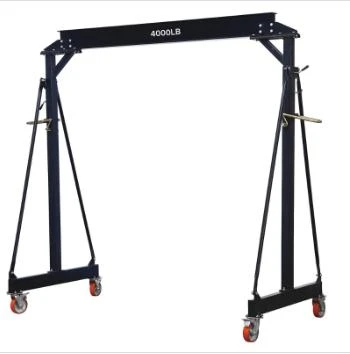bridge and gantry crane
Bridge and Gantry Cranes Essential Components in Modern Material Handling
In the realm of industrial and construction operations, efficient material handling is paramount to ensure productivity and safety. Among the pivotal equipment that facilitates these operations are bridge and gantry cranes. These cranes play a crucial role in lifting and transporting heavy loads in various industries, from manufacturing to shipping.
Understanding Bridge Cranes
Bridge cranes, often referred to as overhead cranes, are characterized by their bridge-like structure that spans a workspace. The bridge is typically supported by two or more overhead rails, allowing the crane to move horizontally across the area. This design enables the crane to cover a significant operational span, making it ideal for large manufacturing plants and warehouses.
One of the primary advantages of bridge cranes is their ability to lift heavy objects with precision. Equipped with hoists that can be adjusted for different load requirements, these cranes are designed to handle weights ranging from a few tons to hundreds of tons. The ability to rotate and maneuver loads enhances their utility, making them a preferred choice for tasks such as loading and unloading materials, assembling large components, and performing maintenance tasks.
Exploring Gantry Cranes
Gantry cranes share similarities with bridge cranes but differ primarily in their support structure. Instead of being mounted on an overhead track, gantry cranes are typically supported by legs that allow them to move freely across a workspace from a trailer, ship, or yard. This mobility makes them especially useful in outdoor settings or areas where overhead infrastructure may not be feasible.
bridge and gantry crane

Gantry cranes are often used in shipyards, freight yards, and construction sites, where they can lift and transport large materials such as steel beams, containers, or heavy machinery. Their design allows for both fixed and adjustable configurations, providing versatility in handling various load sizes and weights. Moreover, gantry cranes can operate on uneven surfaces, making them ideal for construction sites or outdoor environments.
Applications and Industries
Both bridge and gantry cranes find applications across multiple industries. In manufacturing, they are essential for assembly lines where heavy components need to be moved efficiently and safely. In shipping and logistics, these cranes are indispensable for loading and unloading containers from ships, ensuring swift turnaround times for vessels. Construction sites also benefit from these cranes when erecting structures or moving equipment.
The growth of these lifting systems is closely tied to advancements in technology. Modern cranes are equipped with sophisticated control systems, easing operation and enhancing safety. Operators can now utilize remote controls and automated systems, reducing human error and improving workplace safety. Additionally, the integration of smart technology has paved the way for predictive maintenance, allowing for proactive repairs and reduced downtime.
Conclusion
In conclusion, bridge and gantry cranes are vital tools that transform the landscape of material handling in various sectors. Their ability to lift heavy loads, navigate large spaces, and operate in challenging environments illustrates their importance in industrial operations. As industries continue to evolve, the role of these cranes will likely expand, driven by technological advancements and the ever-increasing demand for efficiency and safety in material handling practices. The future of bridge and gantry cranes is bright as they adapt and innovate to meet the needs of a dynamic industrial world.
-
Unlock Seamless Relocation with Our Heavy Equipment Moving ExpertiseNewsJun.06,2025
-
Unleash Unrivaled Flexibility with Our Adjustable Gantry CraneNewsJun.06,2025
-
Unleash Heavy-Duty Efficiency with Our Industrial Gantry Crane SolutionsNewsJun.06,2025
-
Revolutionize Steel Handling with Our Magnetic Lifter RangeNewsJun.06,2025
-
Master Equipment Mobility with Premium Machinery Mover SolutionsNewsJun.06,2025
-
Elevate Your Material Handling with Magnetic Lifter TechnologyNewsJun.06,2025
-
YS Permanent Lifting Magnets: The Smarter Way to Handle SteelNewsMay.22,2025
